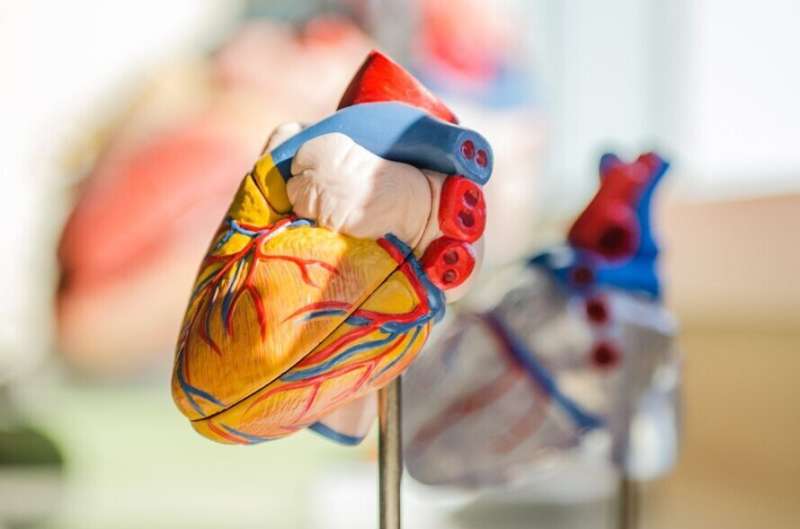This article has been reviewed according to Science X's editorial process and policies. Editors have highlighted the following attributes while ensuring the content's credibility:
fact-checked
trusted source
proofread
Review calls for a refreshed look at clinical approach to heart muscle disorder

The heart's main pumping chamber—the lower left ventricle—contains pieces of muscle called trabeculations that extend into it. Excessive trabeculation, often referred to as non-compacted myocardium, has been described at all ages, from fetus to adult.
Numerous prior studies have reported excessive trabeculation in healthy individuals, possibly due to the influence of changes in circulatory load such as pregnancy or exercise, in co-existence with well-known heart muscle diseases such as dilated cardiomyopathy or hypertrophic cardiomyopathy, or in relation to a rare entity of so-called non-compaction cardiomyopathy.
A review article and expert consensus paper is published in the journal JACC Cardiovascular Imaging and is led by global experts in heart muscle diseases and cardiovascular imaging, from Queen Mary University of London's William Harvey Research Institute and the NIHR Barts Biomedical Research Centre.
Amongst its highlights, "Excessive Trabeculation of the Left Ventricle—JACC: Cardiovascular Imaging Expert Panel Paper" advises that since trabeculated heart muscle does not coalesce to form the compact myocardial wall, the term "left ventricular non-compaction," which is prevalent in contemporary medical literature, is inaccurate and so its use should be discouraged.
The lead author Steffen E. Petersen, Professor of Cardiovascular Medicine at Queen Mary and Honorary Consultant Cardiologist at Barts Health NHS Trust, says, "We envisage the scientific community will move away from the term "LV non-compaction," which is misleading, to use 'excessive trabeculation' which can be observed across a wide spectrum of health and disease states.
"The recommendation from this work has a substantial clinical impact as it can reduce harm to patients and people often wrongly labeled to have a specific disease. We also hope that this review article and expert consensus will lead to further research to better characterize the genetic basis and physiological impact of excessive trabeculation in otherwise normal individuals."
Co-author Dr. Nay Aung, National Institute for Health and Care Research (NIHR) Academic Clinical Lecturer at Queen Mary and Cardiologist, adds, "Based on the available evidence, this expert consensus provides pragmatic recommendations on the clinical management of adults with incidental excessive trabeculation and those diagnosed with hypertrophic or dilated cardiomyopathy along with excessive trabeculation. Evidence is relatively sparse in children with excessive trabeculation, so this population may follow a different clinical trajectory—hence the need for further research."
The experts summarized the evidence and uncertainties about the features of excessive trabeculation and its potential associations with cardiomyopathies—diseases of the heart muscle that result in it being harder to pump blood around the body.
More information: Excessive Trabeculation of the Left Ventricle—JACC: Cardiovascular Imaging Expert Panel Paper, JACC Cardiovascular Imaging (2023). DOI: 10.1016/j.jcmg.2022.12.026





















